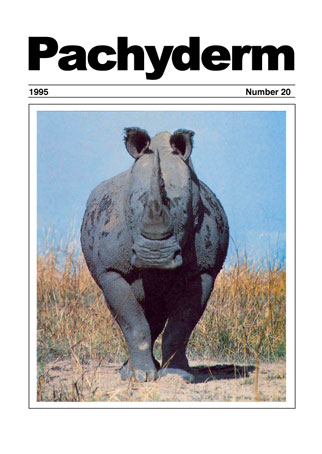Studying forest elephants by direct observation: preliminary results from the Dzanga clearing, Central African Republic
Abstract
Daylight observations in a bai or forest clearing with a wet sandy soil substratum, from which elephants obtain water by creating waterholes, have provided identification of individuals as well as analysis of group structure and behaviourial aspects of forest elephants. Elephants which are observed from a seven metre high platform at the edge of the clearing have been present in over 99% of the 1800 observation hours. The high calcium and other cation content of the water may be a partially responsible for the high number of animals visiting the clearing, but the clearing itself provides a location for social activity that is not feasible in the forest itself. The number of males and females observed is very similar and large tusked old males make up 7% of the population, however the presence of males is significantly higher during the wet season. Evidence suggests that the migratory population in the Dzanga Sangha-Nouabale Ndoki complex is comprised of males.The low birthrate and the equity between sexes suggest a stable, non poached population.
Downloads
Published
How to Cite
Issue
Section
License
Copyright (c) 1995 Andrea K. Turkalo, J. Michael Fay

This work is licensed under a Creative Commons Attribution-NonCommercial 4.0 International License.




